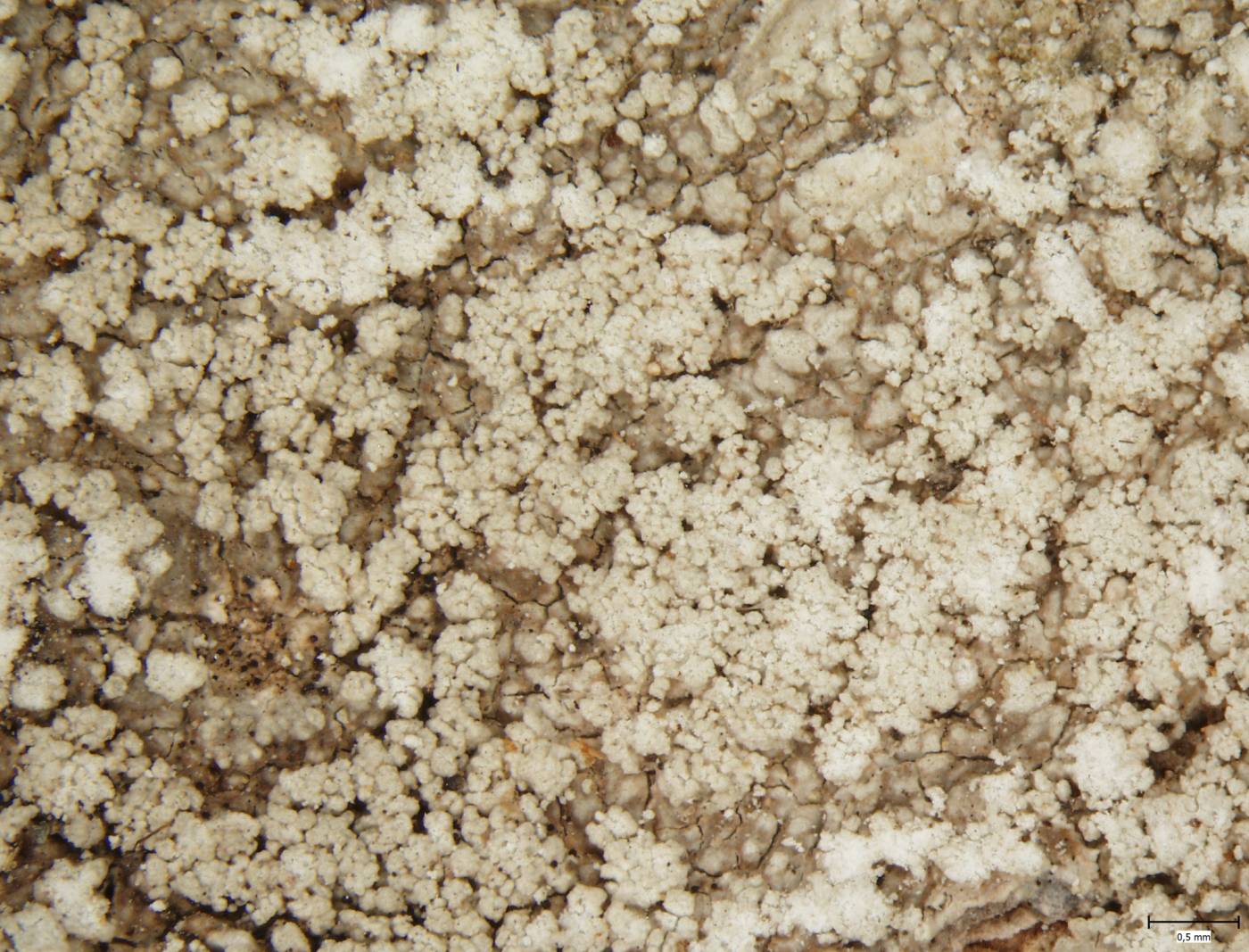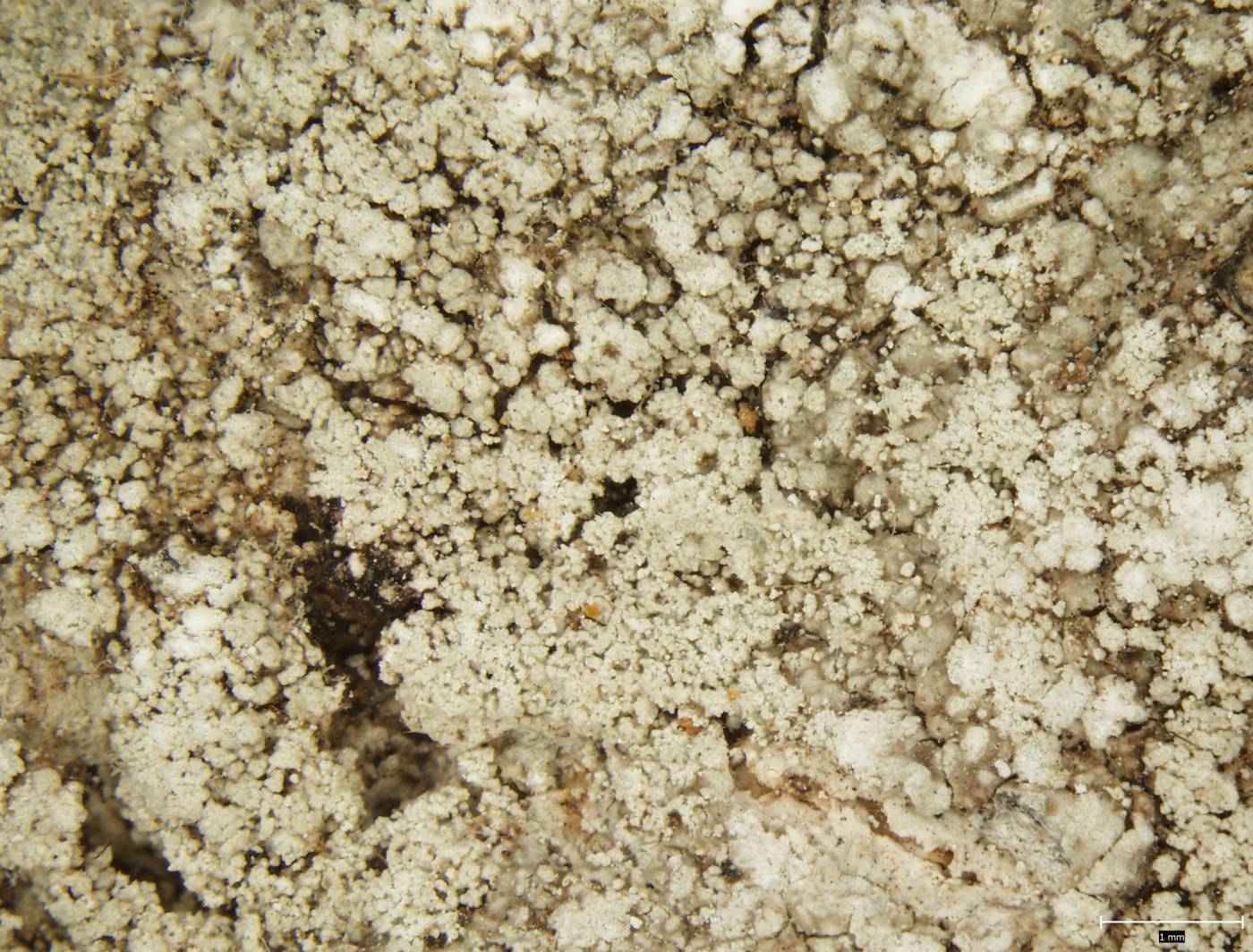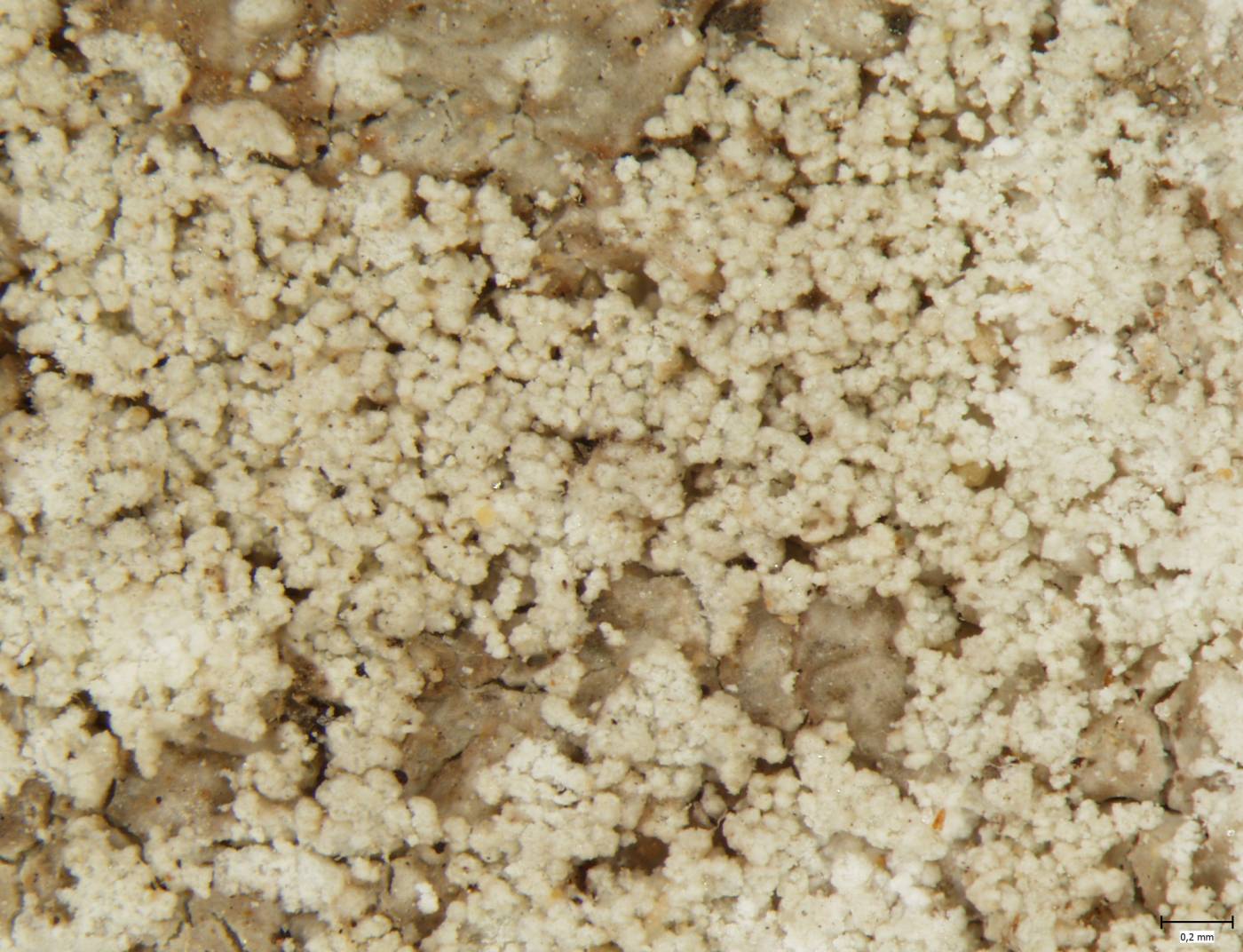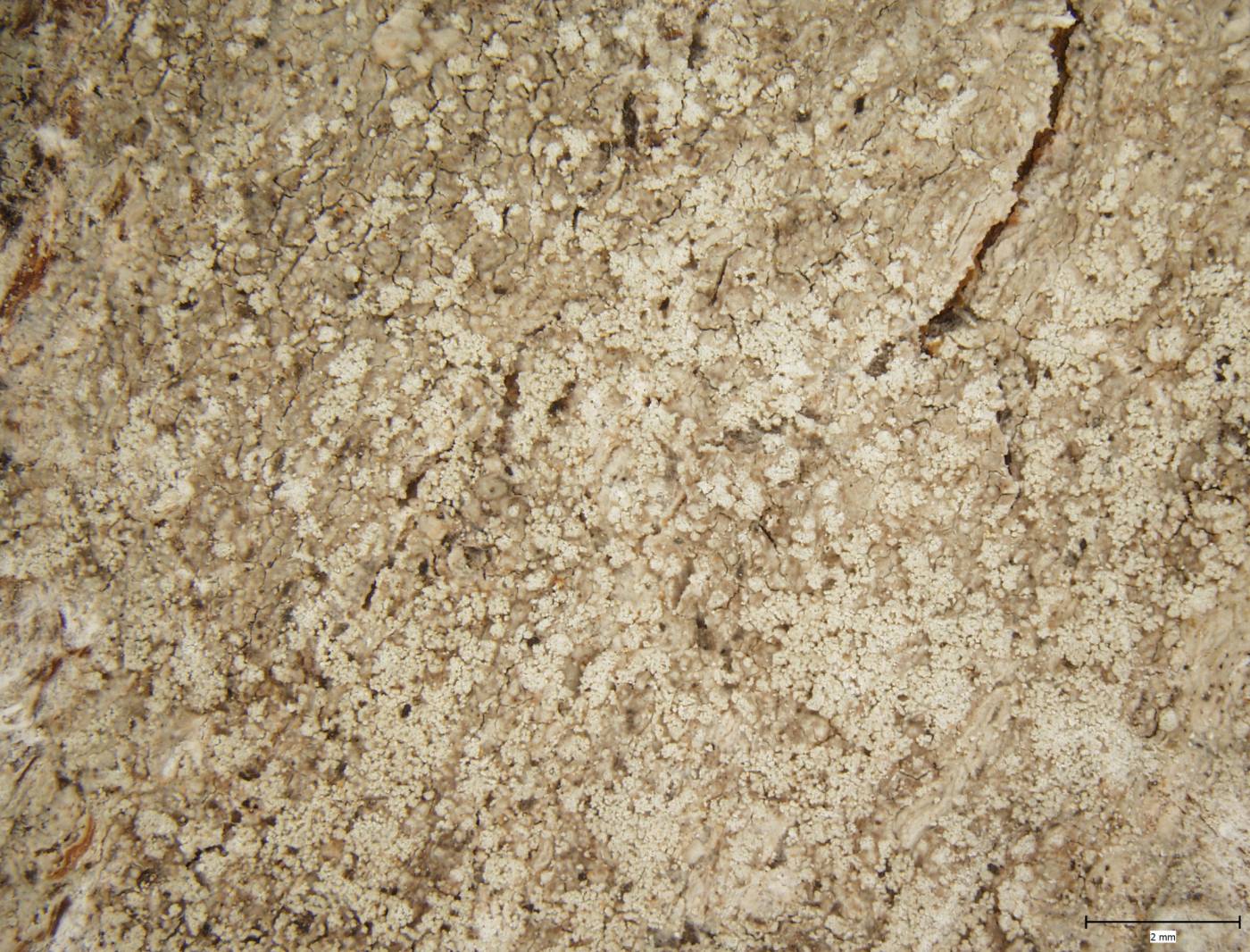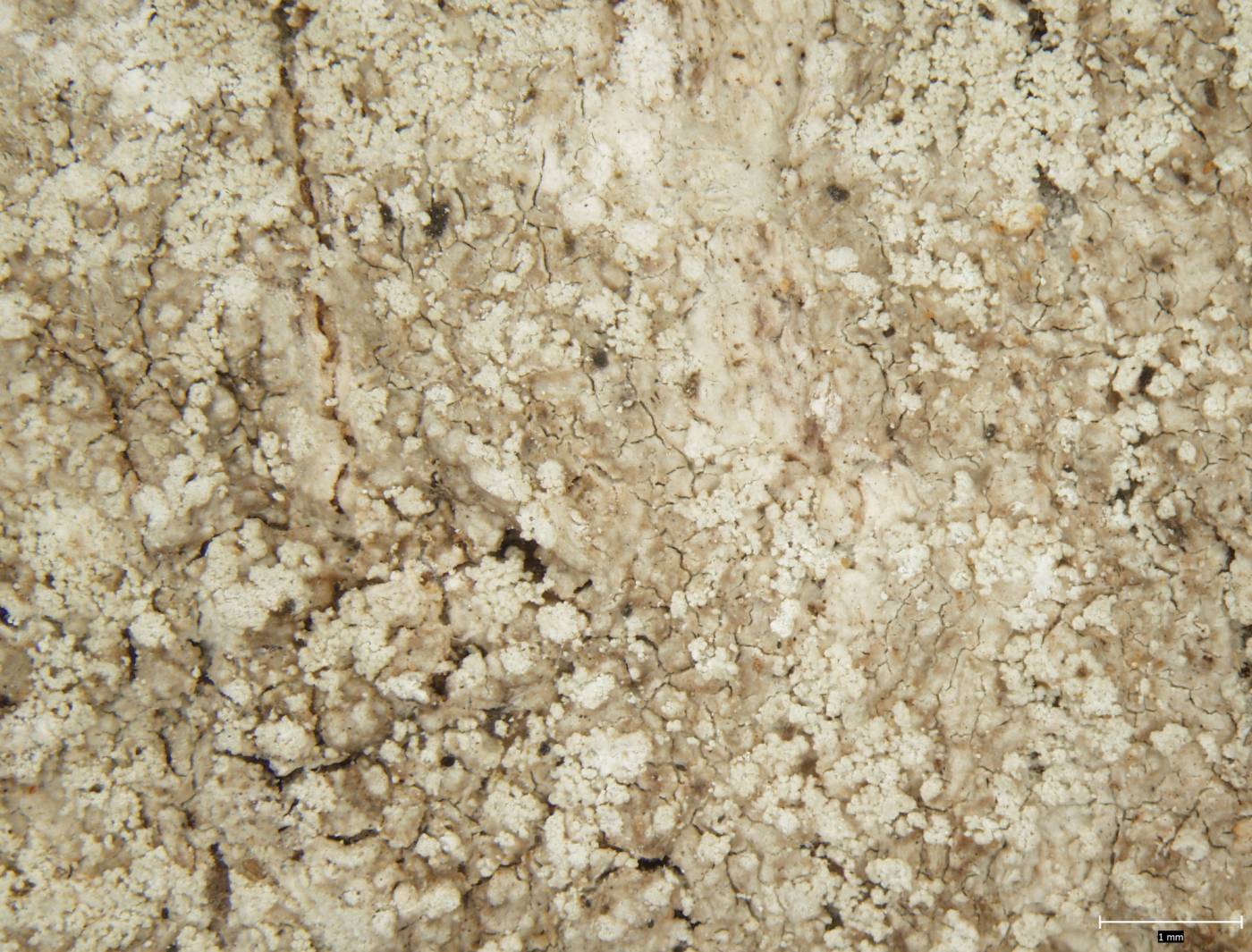Sterile lichen with smooth to verrucose thallus and rounded soralia, which macroscopically resembles, e.g., Pertusaria amara or members of the genus Ochrolechia. Apothecia has been recorded only once (Malíček, unpubl.). The main secondary metabolite is 2'-O-methylperlatolic acid, which is usually detected on TLC together with other (up to five) related substances. Spot reactions are negative or a weak UV fluorescence and a rapidly disappearing KC+ pale red reaction of soralia and medulla can be observed.
Loxospora cristinae is a lichen of the smooth bark of deciduous trees, but there are also records from conifers (Dietrich & Malíček 2019). Available records show a preference for old deciduous and mixed forests from lowlands to mountains. It generally occurs in species-rich communities and can easily be overlooked amongst thalli of other species. The lichen has only recently been described (Guzow-Krzemińska et al. 2018), but the description was quickly followed by records from a number of European countries. In the Czech Republic, it was first found on a oak bark in Zvoníčkova in the Pilsen region (Šoun 2022).
Literature: Dietrich M. & Malíček J. (2019): Cliostomum haematommatis und Loxospora cristinae – zwei wenig bekannte corticole, sorediöse Krustenflechten in der Schweiz. – Meylania 63: 22–29. Guzow-Krzemińska B., Łubek A., Kubiak D., Ossowska E. & Kukwa M. (2018): Phylogenetic approaches reveal a new sterile lichen in the genus Loxospora (Sarrameanales, Ascomycota) in Poland. – Phytotaxa 348: 211–220. Šoun J. (2022): Lišejníky přírodní rezervace Zvoníčkovna. – Erica 29: 3–14.
taxonomic classification:Ascomycota → Lecanoromycetes → Sarrameanales → Sarrameanaceae → Chicitaea
most frequented synonyms:Loxospora cristinaeRed List (Malíček 2023):C1 – critically endangered
Occurrence in the Czech Republic
All records: 2, confirmed 2. One click on a selected square displays particular record(s), including their source(s).

